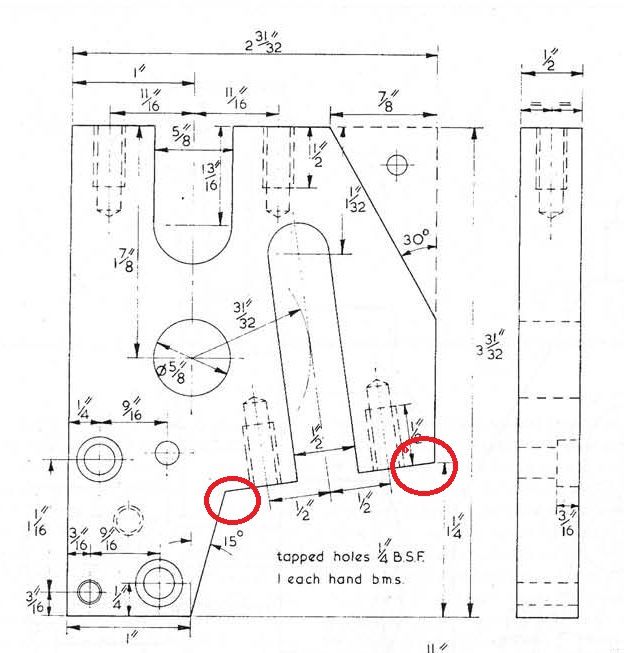I am now getting everything ready to restart in my shop, and one of the first jobs will be to make a 3 roll rolling machine.
I like to get everything ready and worked out before I start, but I have a problem with this drawing (the only one showing what this machine requires).
I have looked at this plan for ages trying to find where I can develop the angle required from, to no avail. All other required angles are shown.
The angled line is between the two red circles.

I am at a stage of mental blockage over this, so any help would be gratefully received.
John
I like to get everything ready and worked out before I start, but I have a problem with this drawing (the only one showing what this machine requires).
I have looked at this plan for ages trying to find where I can develop the angle required from, to no avail. All other required angles are shown.
The angled line is between the two red circles.

I am at a stage of mental blockage over this, so any help would be gratefully received.
John
Last edited:






